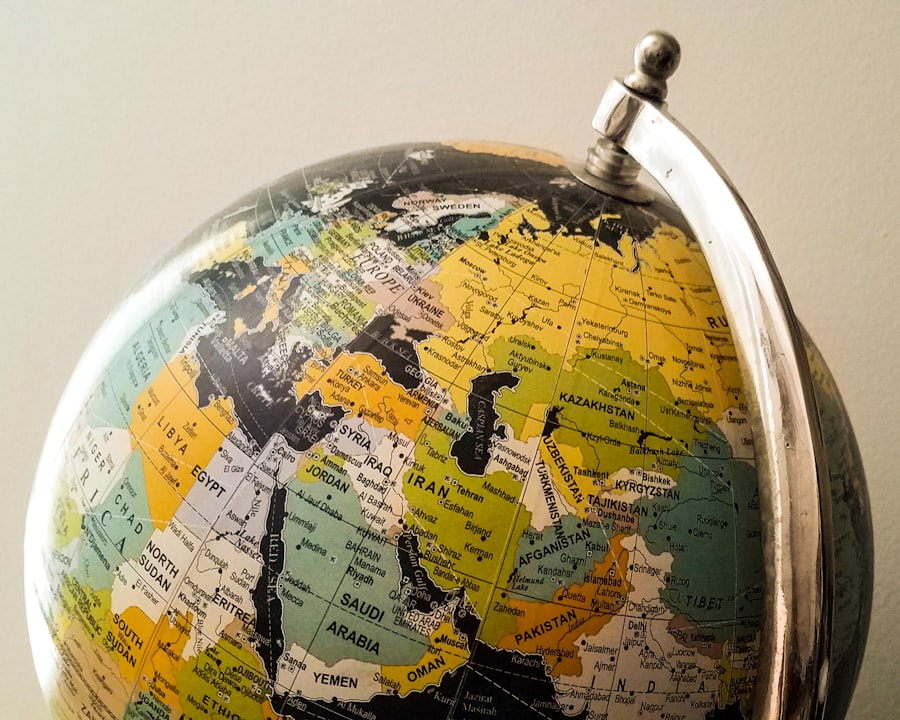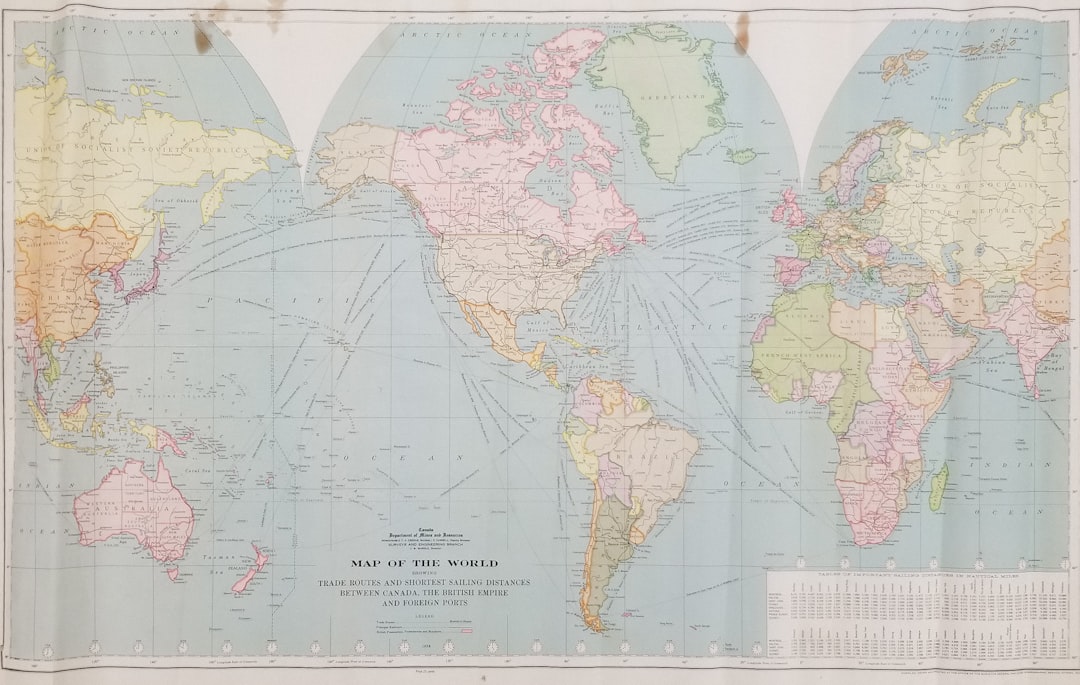International trade serves as a cornerstone of the global economy, facilitating the exchange of goods and services across borders. It allows countries to specialize in the production of certain commodities, leveraging their unique resources and capabilities. This specialization not only enhances efficiency but also fosters innovation, as nations strive to improve their competitive edge.
By engaging in international trade, countries can access a broader market, which can lead to increased economic growth and improved living standards for their citizens. Moreover, international trade promotes cultural exchange and understanding among nations. As countries interact through commerce, they share ideas, traditions, and technologies, enriching their societies.
This interconnectedness can lead to stronger diplomatic relationships and a more peaceful global environment.
Key Takeaways
- International trade is crucial for economic growth and development, as it allows countries to access a wider range of goods and services, and promotes specialization and efficiency.
- Understanding the global commerce arteries, such as the Suez Canal and Panama Canal, is essential for grasping the interconnectedness of international trade and the movement of goods across the world.
- Trade routes play a vital role in international commerce, as they facilitate the movement of goods and services between countries and regions, shaping global economic dynamics.
- Navigating the challenges of international trade requires addressing issues such as trade barriers, currency fluctuations, and political instability, among others.
- Globalization has significantly impacted international commerce by increasing interconnectedness, creating new market opportunities, and intensifying competition among businesses.
- Technology has revolutionized international trade by enabling faster and more efficient communication, payment systems, and supply chain management.
- Government policies play a crucial role in international trade, as they can either facilitate or hinder the flow of goods and services through tariffs, regulations, and trade agreements.
- Cultural understanding is essential in international commerce, as it helps businesses navigate differences in language, customs, and business practices, fostering successful partnerships and collaborations.
- The future of international trade is likely to be shaped by technological advancements, shifting geopolitical dynamics, and the growing influence of emerging markets.
- Strategies for success in international trade include conducting thorough market research, building strong relationships with partners and customers, and adapting to changing global economic conditions.
- In conclusion, navigating the world of international trade requires a deep understanding of global commerce arteries, trade routes, government policies, cultural differences, and the impact of globalization and technology on international commerce.
Understanding the Global Commerce Arteries
The arteries of global commerce are the intricate networks that facilitate the movement of goods and services around the world. These networks include shipping routes, air freight corridors, and overland transportation systems that connect producers to consumers. Major shipping lanes, such as the Suez Canal and the Panama Canal, play a crucial role in reducing transit times and costs, making them essential for international trade.
Understanding these routes is vital for businesses looking to optimize their supply chains and reach new markets efficiently. In addition to physical routes, digital pathways have emerged as significant arteries of global commerce. E-commerce platforms enable businesses to reach customers across the globe with unprecedented ease.
The rise of online marketplaces has transformed traditional trade dynamics, allowing even small enterprises to participate in international commerce. As businesses navigate these complex networks, they must remain agile and adaptable to changing market conditions and consumer preferences.
The Role of Trade Routes in International Commerce

Trade routes have historically shaped the course of international commerce, dictating how goods are transported and exchanged. These routes are not only physical pathways but also represent the economic lifelines that connect producers with consumers. The Silk Road, for instance, was a network of trade routes that facilitated the exchange of silk, spices, and other valuable commodities between East and West.
Today’s trade routes continue to evolve, influenced by technological advancements and geopolitical shifts. Modern trade routes are characterized by a combination of maritime, aerial, and terrestrial pathways. Shipping remains the dominant mode of transport for international trade, accounting for a significant percentage of global cargo movement.
However, air freight has gained prominence for high-value and time-sensitive goods. The development of infrastructure such as ports, airports, and highways is crucial for enhancing the efficiency of these trade routes. As countries invest in their transportation networks, they not only improve their own economies but also contribute to the overall health of global commerce.
Navigating the Challenges of International Trade
| Challenges | Impact | Solutions |
|---|---|---|
| Tariffs and Trade Barriers | Increased costs for imports/exports | Seeking alternative markets, lobbying for trade agreements |
| Cultural Differences | Communication misunderstandings | Cultural training, hiring local experts |
| Logistics and Supply Chain | Delays and disruptions | Improved planning, diversifying suppliers |
| Legal and Regulatory Compliance | Risk of fines and penalties | Legal consultation, compliance training |
While international trade offers numerous opportunities, it is not without its challenges. Businesses must navigate a complex landscape of regulations, tariffs, and trade agreements that vary from country to country. These barriers can complicate the process of entering new markets and may deter companies from pursuing international opportunities.
Additionally, fluctuations in currency exchange rates can impact pricing strategies and profit margins, adding another layer of complexity to international transactions. Political instability and economic uncertainty in certain regions can also pose significant risks for businesses engaged in international trade. Companies must remain vigilant and conduct thorough risk assessments to mitigate potential disruptions to their supply chains.
Furthermore, cultural differences can lead to misunderstandings in negotiations and business practices. To succeed in international trade, companies must be prepared to adapt their strategies and approaches to navigate these challenges effectively.
The Impact of Globalization on International Commerce
Globalization has fundamentally transformed the landscape of international commerce over the past few decades. It has led to increased interconnectedness among economies, resulting in a more integrated global market. As barriers to trade have diminished, businesses have gained access to a wider array of resources and consumers than ever before.
This expansion has fueled economic growth in many regions while also creating new opportunities for innovation and collaboration. However, globalization has also sparked debates about its implications for local economies and communities. Critics argue that it can lead to job displacement and wage stagnation in certain sectors as companies seek cheaper labor abroad.
Additionally, the environmental impact of increased production and transportation cannot be overlooked. As globalization continues to shape international commerce, it is essential for policymakers and business leaders to strike a balance between reaping its benefits and addressing its challenges.
The Influence of Technology on International Trade

Technology plays a pivotal role in shaping the dynamics of international trade. Advancements in logistics and supply chain management have streamlined processes, reducing costs and improving efficiency. Innovations such as blockchain technology enhance transparency and security in transactions, fostering trust among trading partners.
Furthermore, data analytics allows businesses to gain insights into consumer behavior and market trends, enabling them to make informed decisions about product offerings and pricing strategies. The rise of digital platforms has also revolutionized how businesses engage in international trade. E-commerce has opened up new avenues for companies to reach global customers without the need for a physical presence in foreign markets.
Social media marketing allows brands to connect with consumers on a personal level, building loyalty and driving sales across borders. As technology continues to evolve, it will undoubtedly play an increasingly critical role in shaping the future of international commerce.
The Role of Government Policies in International Trade
Government policies significantly influence the landscape of international trade by establishing regulations that govern cross-border transactions. Tariffs, quotas, and trade agreements are tools that governments use to protect domestic industries while promoting exports. These policies can have far-reaching implications for businesses engaged in international commerce, affecting their competitiveness in global markets.
Trade agreements such as NAFTA (now USMCA) or the European Union’s single market facilitate smoother trade by reducing tariffs and harmonizing regulations among member countries. However, changes in political leadership can lead to shifts in trade policy that may disrupt established agreements. Businesses must stay informed about these developments and adapt their strategies accordingly to navigate the evolving regulatory environment.
The Importance of Cultural Understanding in International Commerce
Cultural understanding is paramount in international commerce as it influences communication styles, negotiation tactics, and consumer preferences. Each culture has its own set of values and norms that shape business practices. For instance, while some cultures prioritize direct communication and assertiveness in negotiations, others may value indirect communication and relationship-building.
Failure to recognize these cultural differences can lead to misunderstandings and hinder successful business interactions. Companies looking to expand into foreign markets must invest time in understanding local customs and practices to build rapport with potential partners and customers. This cultural sensitivity not only enhances business relationships but also contributes to a more positive perception of the brand within diverse markets.
The Future of International Trade
The future of international trade is poised for transformation as emerging trends reshape the global landscape. Sustainability is becoming a central focus for businesses as consumers increasingly demand environmentally responsible practices. Companies are exploring ways to reduce their carbon footprint throughout their supply chains while adhering to ethical sourcing standards.
Additionally, geopolitical tensions may influence trade dynamics as countries reassess their dependencies on foreign markets. The rise of regional trade agreements may signal a shift towards more localized supply chains as nations seek greater self-sufficiency. As businesses navigate this evolving landscape, adaptability will be key to thriving in an increasingly complex world of international commerce.
Strategies for Success in International Trade
To succeed in international trade, businesses must adopt comprehensive strategies that encompass market research, risk management, and cultural awareness. Conducting thorough market analysis helps identify potential opportunities while assessing competitive landscapes in target regions. Companies should also develop robust risk management frameworks that account for geopolitical uncertainties and economic fluctuations.
Building strong relationships with local partners can provide valuable insights into market dynamics and consumer behavior. Engaging with local stakeholders fosters trust and enhances brand reputation within foreign markets. Furthermore, investing in technology solutions that streamline operations can improve efficiency and responsiveness in an increasingly fast-paced global marketplace.
Navigating the World of International Trade
Navigating the world of international trade requires a multifaceted approach that considers economic factors, cultural nuances, technological advancements, and government policies. As businesses engage with diverse markets across the globe, they must remain agile and adaptable to thrive amidst challenges and seize opportunities for growth. By fostering cultural understanding, leveraging technology, and implementing effective strategies, companies can position themselves for success in the dynamic realm of international commerce.
In conclusion, international trade is not merely an exchange of goods; it is a complex interplay of various elements that shape economies and societies worldwide. As globalization continues to evolve, understanding these dynamics will be essential for businesses seeking to make their mark on the global stage.
In the ever-evolving landscape of global trade, understanding the intricate networks that facilitate commerce is crucial. An insightful article that delves into the concept of Global Commerce Arteries can be found on MyGeoQuest. This piece explores the vital routes and infrastructures that underpin international trade, highlighting their significance in the global economy. For a deeper understanding of these essential trade pathways, you can read more about it on MyGeoQuest’s website by visiting this link.
WATCH NOW! Unlocking Disaster: 7 Choke Points That Could Fracture Our Connected World Overnight
FAQs
What are global commerce arteries?
Global commerce arteries refer to the major transportation routes and networks that facilitate the movement of goods, services, and capital across the world. These arteries include sea routes, air routes, and land transportation networks.
What are some examples of global commerce arteries?
Examples of global commerce arteries include the Suez Canal, Panama Canal, major shipping lanes such as the Strait of Malacca, major air routes connecting major cities, and land transportation networks such as the Trans-Siberian Railway and the European motorway network.
Why are global commerce arteries important?
Global commerce arteries are important because they facilitate international trade and economic exchange by providing efficient and cost-effective transportation routes for goods, services, and capital. They play a crucial role in connecting different regions of the world and enabling the global economy to function.
How do global commerce arteries impact the global economy?
Global commerce arteries impact the global economy by enabling the efficient movement of goods, services, and capital across the world. They help reduce transportation costs, facilitate international trade, and contribute to economic growth and development.
What are the challenges facing global commerce arteries?
Challenges facing global commerce arteries include congestion, infrastructure maintenance, geopolitical tensions, environmental concerns, and technological advancements. These challenges can impact the efficiency and reliability of global transportation networks.
